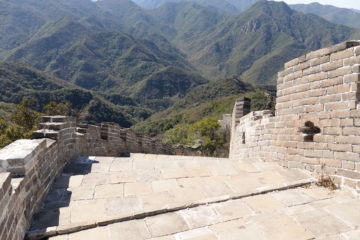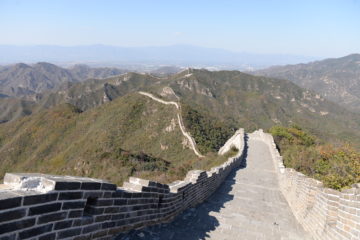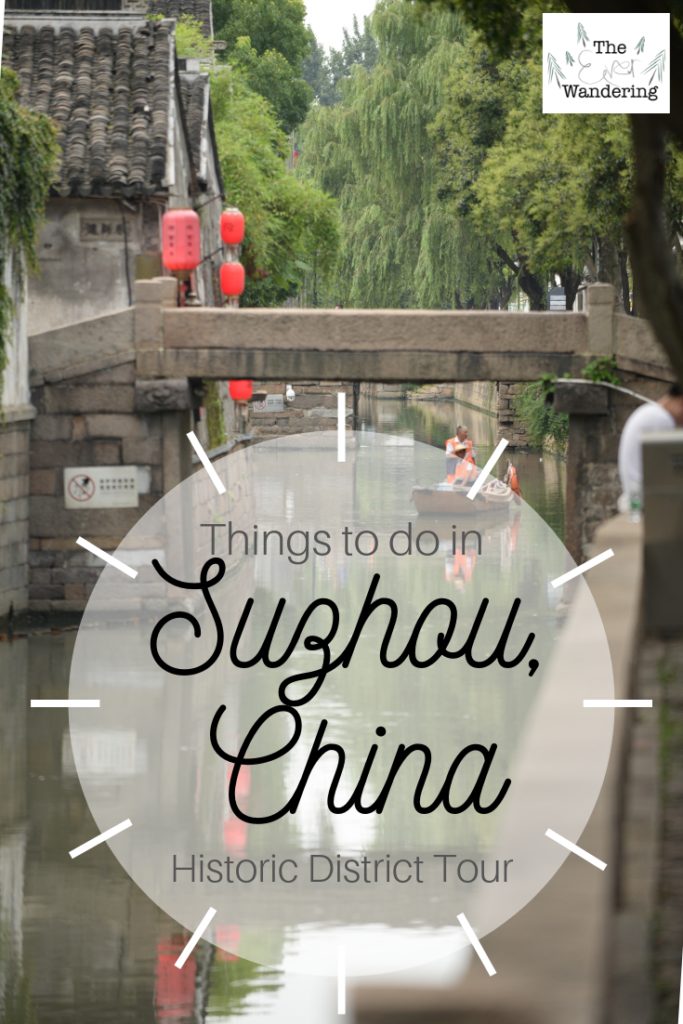
There’s lots to explore in Suzhou – China’s water town – for tourists and travelers alike. Located roughly 60 miles west of Shanghai, this city is sometimes referred to as the “Venice of the East.” It is so named because Suzhou’s historic district sits atop an intricate system of waterways. While there’s quite a bit to see in this diverse city, the historic district is the place to go for an authentic Chinese experience. From ancient streets to boat rides along the canals, there’s plenty of opportunity for unique, free site seeing through Suzhou.
Luckily enough, there are several attractions, famous streets, and shopping districts all located within a three-mile radius of each other, making for a lovely all-day or weekend-long adventure. This makes Suzhou not only a very special place to visit, but accessing its rich culture is incredibly easy.
Possibly one of the most famous streets in Suzhou is Pingjiang Lu (Pingjiang Road). Famous not only for its ancient architecture, cobbled streets, and canal side views, but also for it’s local cuisine, shopping, and street artists. Fortunately for travelers there are also several other points of interest in the historic district and within walking distance of Pingjiang. There’s the Xiangmen Gate, “Walking Street,” and Boa’en Temple all near Suzhou’s most prided road. All of these are free to explore to your heart’s content.
With that being said, Suzhou is one of our personal favorite destinations in China, so we’ve outlined a virtual walking tour of the historic district below for all you eager adventurers!
Suzhou Attractions – from Xiangmen Gate to Boa’en Temple
One of the easiest ways to see several Suzhou attractions at once would be to take a walking tour from the Xiangmen City Gate all the way to Boa’en Temple. Pingjiang Road and Walking Street are nestled in-between the two historic sites.
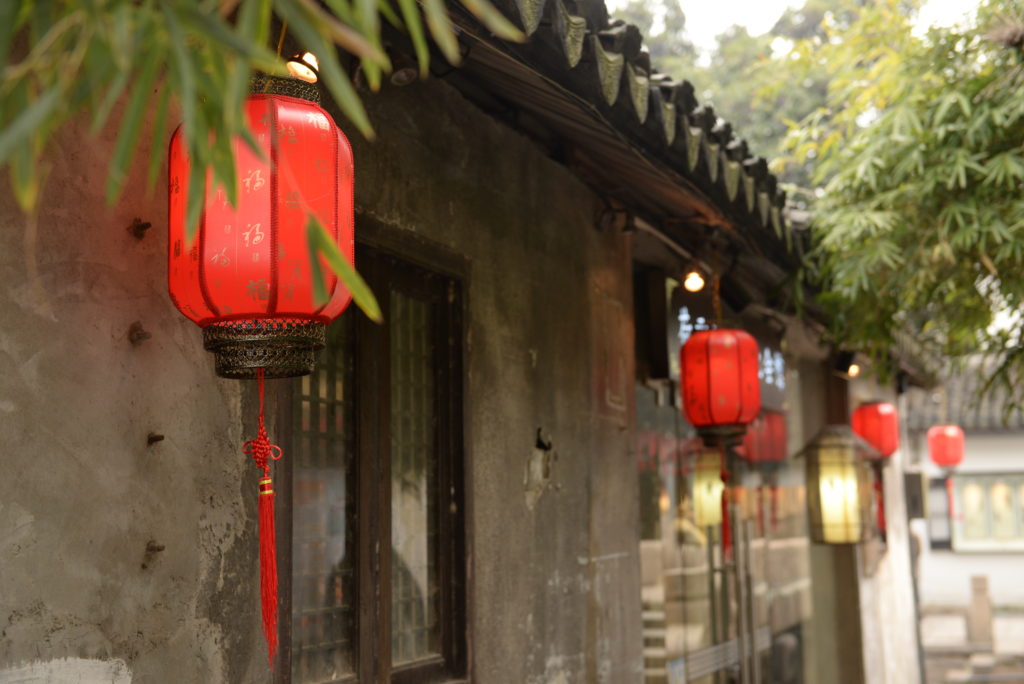
Of course, each one of these points of interest are worth exploring individually, but if you’re short on time hopping around the historic district will still give you a good taste of Suzhou and its culture. The best part is that each one of these attractions are free and they’re tucked between neighborhoods and local shops. You’ll see people going about their normal lives, getting a further touch of what China is really like.
Better yet, each of these spots is also accessible by metro, bus, and your own two feet! If you’re really feeling adventurous, stop along the way at the local food carts and stands for some of China’s infamous street food fair. And, if you really don’t feel like walking, catching a rickshaw to your next destination is a breeze! Those guys are everywhere.
Excited? Us too! Let’s break down each location and move from the bottom to the top. We’ll start in the southeast and move northwest from Xiangmen to Boa’en. Let the virtual walking tour commence!
Xiangmen Gate, a part of the City Wall of Suzhou
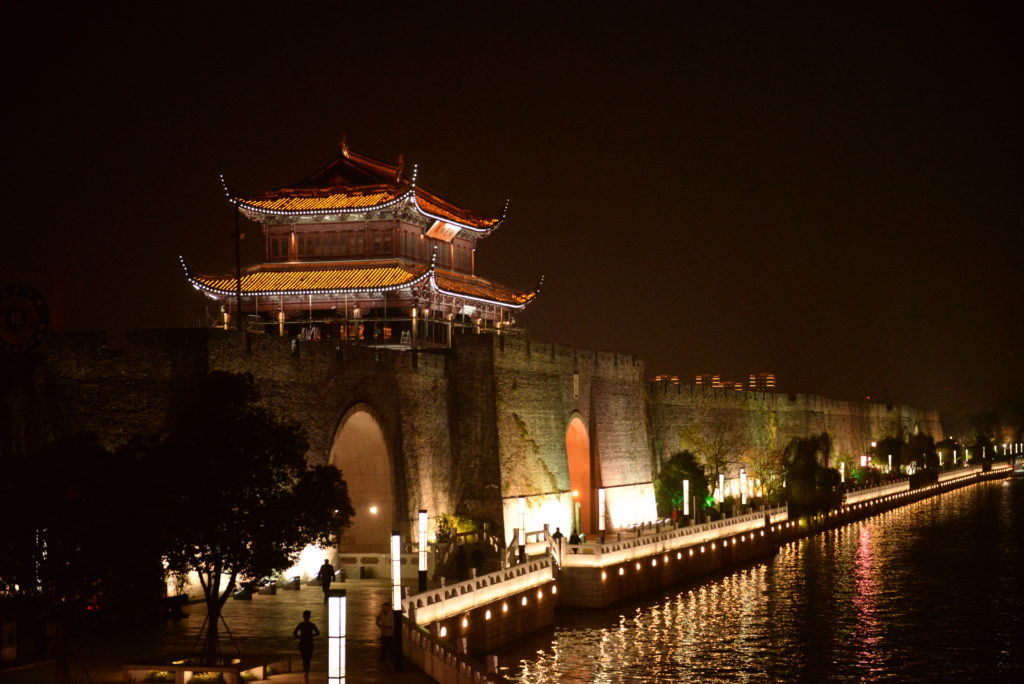
Xiangmen Gate is one of eight historic gates that are a part of the City Wall of Suzhou. In ancient times this perimeter wall helped protect what is now the “historic district.” While each gate has its own unique features, Xiangmen is great because it’s only a few hundred meters from Pingjiang Road.
While Xiangmen has been rebuilt, there’s still residue of the original structure. As the wall itself follows along the Outer River, you can take in a refreshing walk and watch the many fisherman and tugboats chug up and down the stream. It’s a local hotspot too, especially in the evenings when the weather is nice, you’ll find dancing, Tai Chi, music, and families laughing and playing together.
The gate also hosts a museum, cafes, kayak rentals, and is joined with The Couple’s Garden Retreat for you nature lovers.
“So, how do I get there?” you might be wondering to yourself. Well, we’ll tell you:
Take Line 1 (the green line) to Xiangmen Station and use Exit 3. You will exit the station at Cangjie Street. Take a right and walk directly to Ganjiang East Road, Suzhou’s main road (literally less than 50 feet away). Once you’re facing Ganjian, take a left and walk toward the bridge that crosses The Outer River. The west entrance of Xiangmen Gate will be on your left.
There are also buses that continuously run up and down Ganjiang East Road. The nearest stop is the Xiangmen bus stop.
Famous Pingjiang Road and the ancient canals
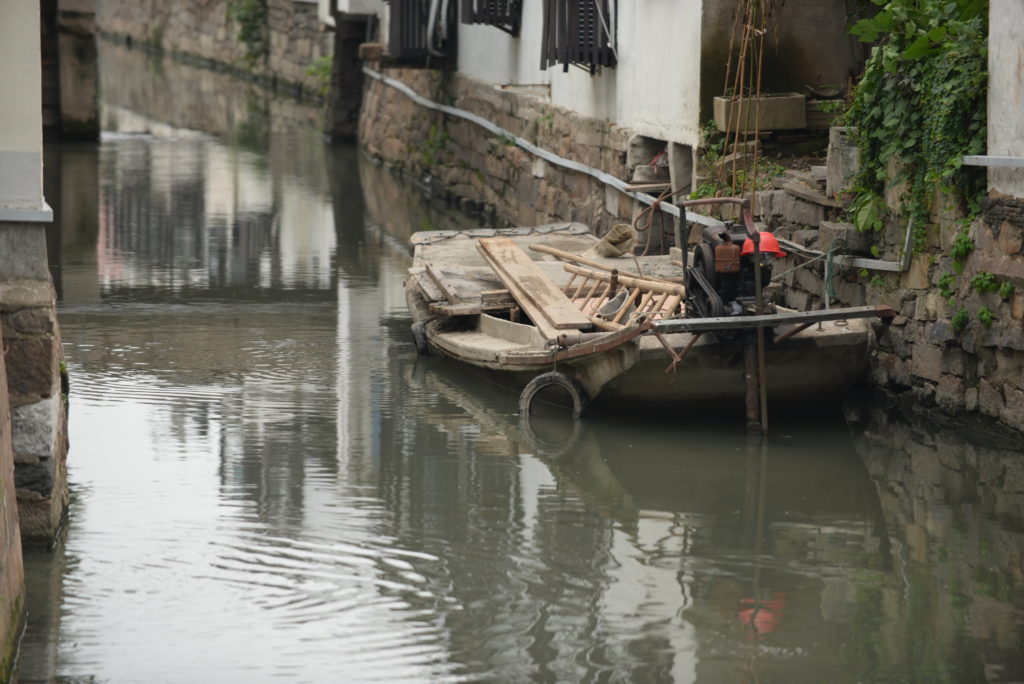
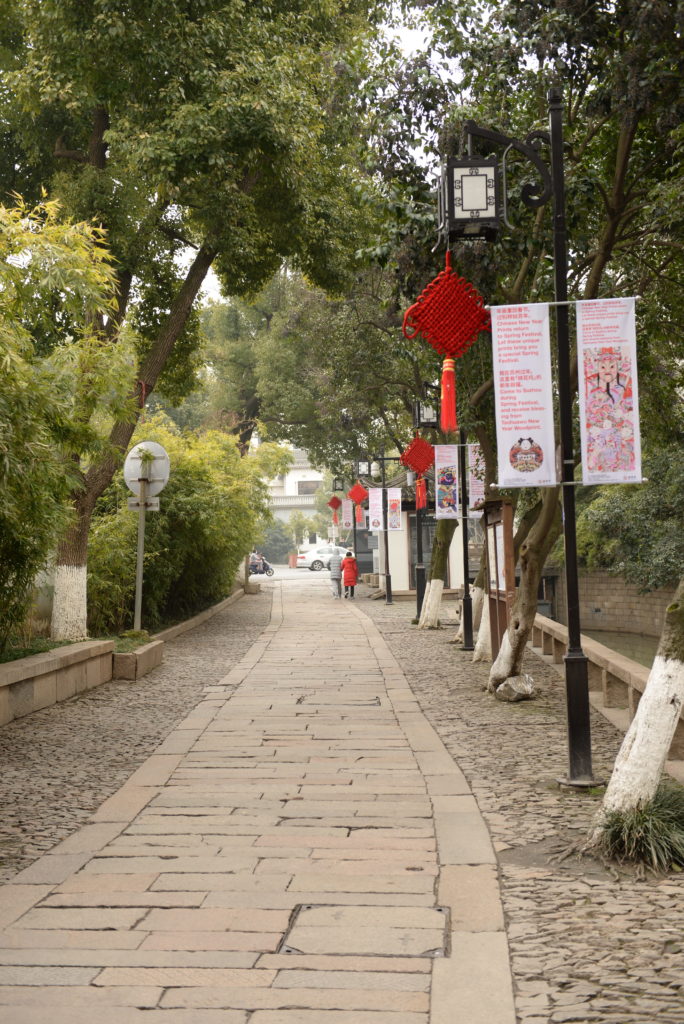
As far as things to do in Suzhou are concerned, Pingjiang Road is a must! The avenue’s cobbled streets and stone buildings that traipse alongside the industrious canal system will leave you feeling like you’ve stepped back into ancient times. While it’s definitely touristy, its still authentic. Commercial shops like Starbucks have unfortunately moved in, but there’s till plenty of silk shops, fan shops, and local cuisine, along with original architecture and historic markers to compensate. Several ancient bridges and wells are still dotted along the road. Its side streets and alleyways are filled with mom and pop shops and it just so happens to be where a lot of locals live themselves! You’ll see anything from grandma’s hanging out their laundry to old men sitting around playing cards.
Of course, a lot of Suzhou’s prominent historic figures once inhabited or constructed much of the Pingjiang area. What is rich in local culture is also rich in historic prominence to Suzhou.
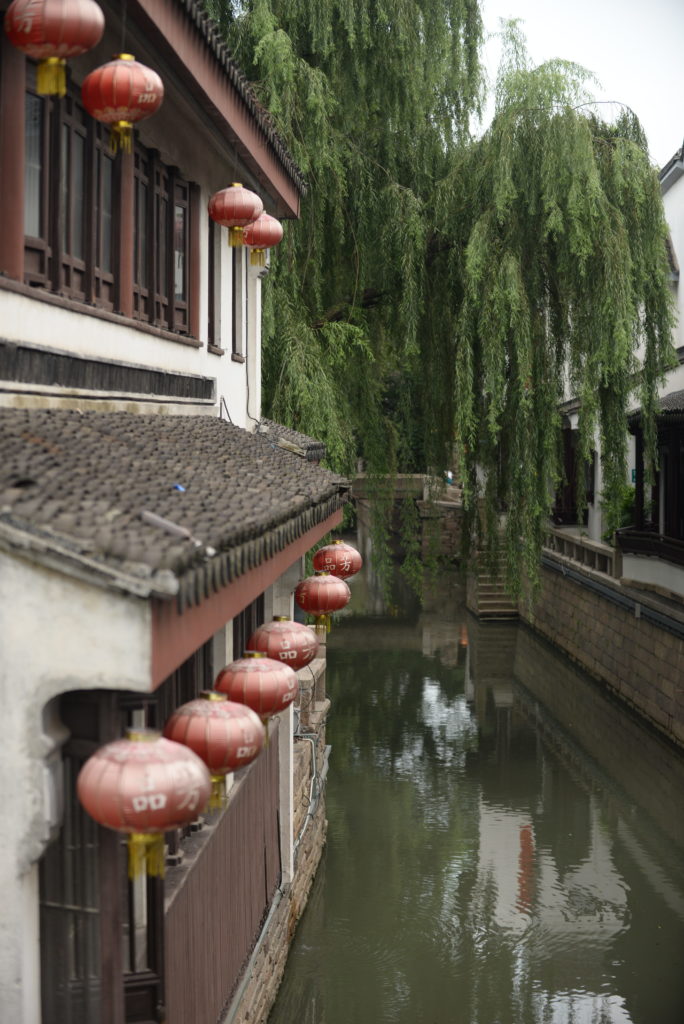
What we consider to be one of Suzhou’s highlights, however, are the canals. The peaceful ambiance of the canals drifting lazily beside you as you stroll down Pingjiang make for an unforgettable experience. Not to mention, they’re quite impressive as they work themselves throughout the grid of the historic district. Boat rides and tours can likewise be taken on the waterways.
Pingjiang Road is this funky mix. It allows you to peak into the past, gives you some perspective on how a lot of the locals still live, and is probably the best place for kitschy souvenirs. Its a bizarre blend between completely authentic and totally touristy. Regardless, you’ll have a blast exploring the area.
To get to Pingjiang Road head to the right from Exit 3 at Ganjiang East Road. Instead of hanging a left to go toward Xiangmen gate, go to the right. It’s less than a football field’s length away, you can’t miss it.
If you’re leaving from the west gate at Xiangmen Gate, simply backtrack to the right, go past the subway and you’ll walk right into Pingjiang.
Guanqian Jie, aka “Walking Street”
You’ve had your fill of Pingjiang, and now you’re ready to step back into modern China and all its glistening commercialism – “Walking Street” here we come! Trust us, this part of China is just as much an experience as the historic side. Just down the road from Pingjiang is the famous Guanqian Jie, known in English as “Walking Street.” It’s home to loads of shopping and street food galore. While shopping may not be your thing (don’t worry it’s not ours either), the food and exciting atmosphere are all the fun you need! People by the thousands are constantly converging on the street and its surrounding roadways.
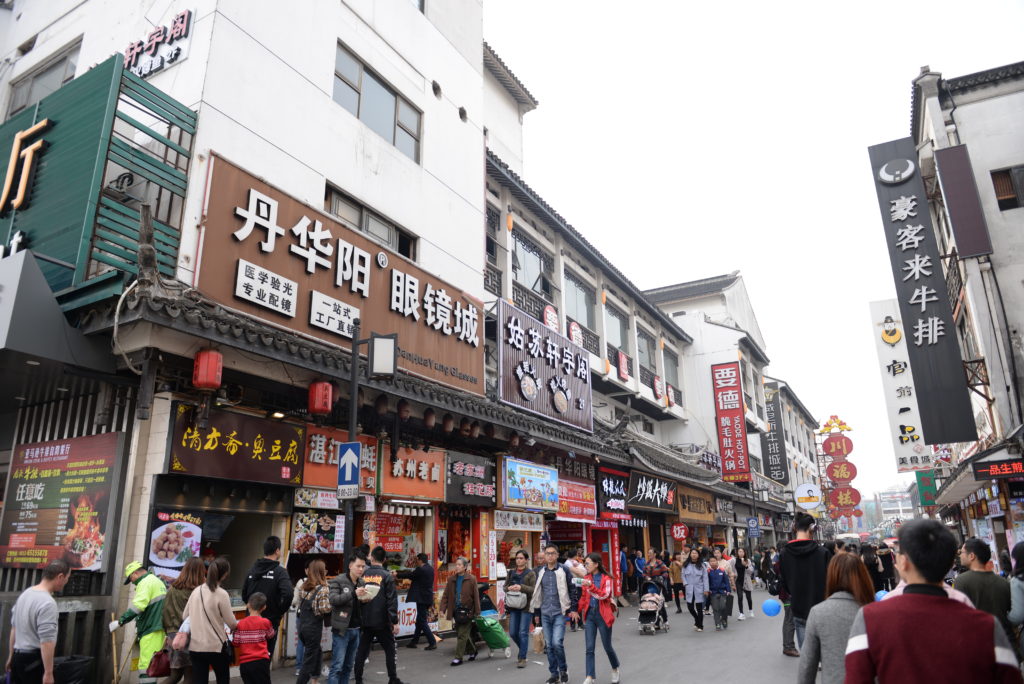
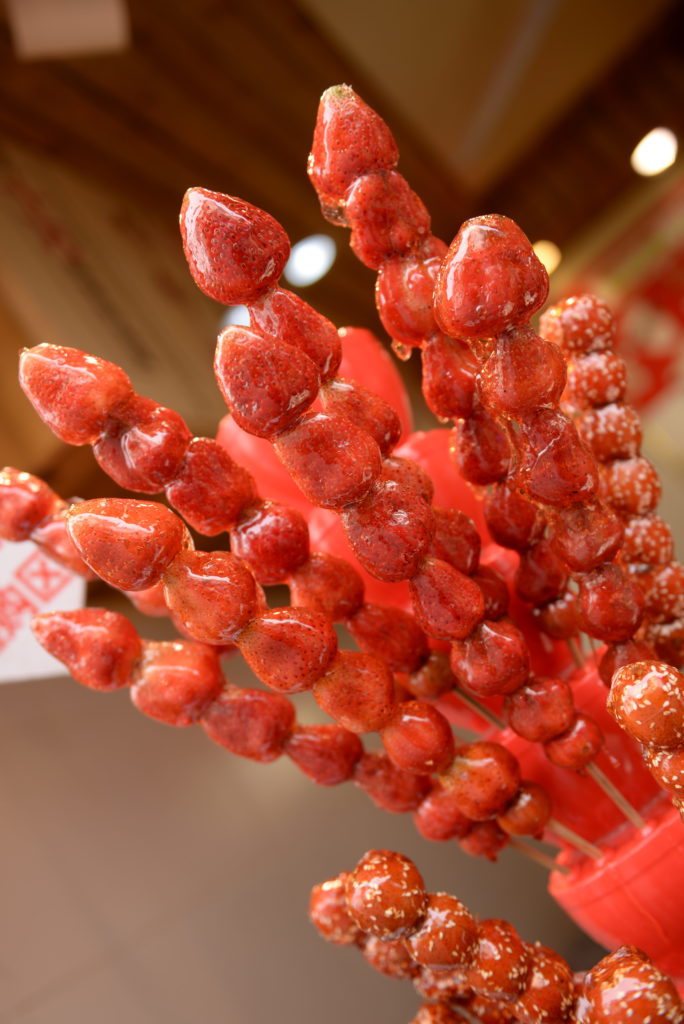
Blazing neon signs, countless shop keepers beckoning you to come in, and people munching on every snack imaginable are what make Guanqian Street so interesting. On occasion you’ll encounter singers and musicians on the street, as well as a few pickpockets and scam artists!
Seriously, beware of the scam artists trying to sell you “Gucci bags” or “Rolex watches.” They target anyone who doesn’t look Chinese or asian in general. You’ll know them instantly. Typically they approach you with a business card or flyer picturing their goods and they instantly start trying to get you to follow them back to their store. Don’t fall for it. If you’re aware of what they’re about, then just have fun with the attempted scamming experience too. They’ll leave you alone with a simple “bu yao” (pronounced boo yow, which means “don’t want”).

Aside from that, Walking Street is lively and the perfect opportunity to try all the wonderfully weird foods that China has to offer. There’s also the Xuanmiao Temple open to visitors, along with more souvenir shops too if you’re into that.
“How do I get there?” you ask. Let’s say you exit Pingjiang Road the way you entered it on this particular walking tour – at Ganjiang East Road. Continue right until you run into Lindun Lu. Put yourself on the left, canal side of the road though. Take a right down Lindun Lu and continue down 450 meters. Guanqian Jie will be on your left. It’s marked by a big set of stone arches, barring anything but foot traffic from entering.
By subway take line 1 again and get off at the Lindun Lu stop, take exit 3, and head north up the street. Several city buses also frequent the Lindun Lu area.
Boa’en Temple Pagoda
Now you’ve had your fill of street food and entertainment, next stop is the Boa’en Temple Pagoda. Known as the “North Temple,” because of its northern location to the historic district’s center, this operating Buddhist monastery is still open to the visiting public. Not only is it a historic focal point for Suzhou’s tourism, but it’s mighty impressive! Towering straight up to the sky, this particular structure will have you in awe – not only because of its beautiful, traditional Chinese craftsmanship, but because of the architectural marvel that it is as well.
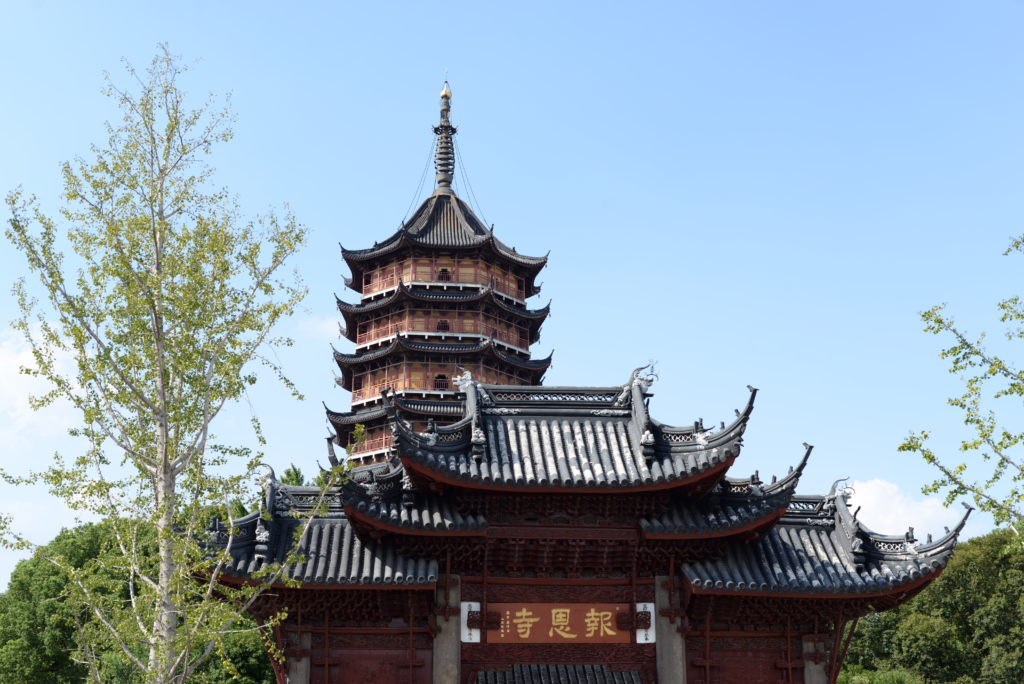
The temple is open to the public, but be sure to note the listed rules to adhere to when visiting. Otherwise, enjoy and have a nice walk throughout the temple’s gated grounds.
Getting there is easy. If you’ve entered Guanqian Jie from Lindun Lu great! Continue west and walk to the end of road. Walking Street tees directly into Renmin Lu. Simply take a right and continue north. You’ll quickly see the giant pagoda poking out over surrounding buildings and trees.
If you’re tired of walking take the metro’s blue line 4. The temple is located on the corner of Renmin Lu and Xibei Jie, at the “Beisita” stop. There is also a bus stop under the same name “Beisita” on Renmin Lu, just south of the pagoda.
Visit Suzhou’s historic district – there’s plenty of things to do!
There are endless possibilities to get into when you visit Suzhou, China. This particular city is blessed to be a uniquely bizarre blend of ancient and modern. Even within its historic district will you find portions where the modern world has seeped in. Yet, it has done a wonderful job at preserving and highlighting its ancient histories. This eccentric fusion makes a tour of Suzhou’s historic district well worth it.
Be sure to include Xiangmen Gate, Pingjiang Road, Walking Street, and the Boe’en Temple Pagoda on your list of things to do in Suzhou. It’s the one of the best ways to soak in China’s culture – both past and present. You’ll get the experience of a lifetime and it might just give you a more even perspective on how China truly functions. There’s something for everyone in this particular survey of the city. We promise, you won’t be bored or disappointed if you do. But, considering that every Suzhou attraction that we listed is free you won’t be losing out anyway!



